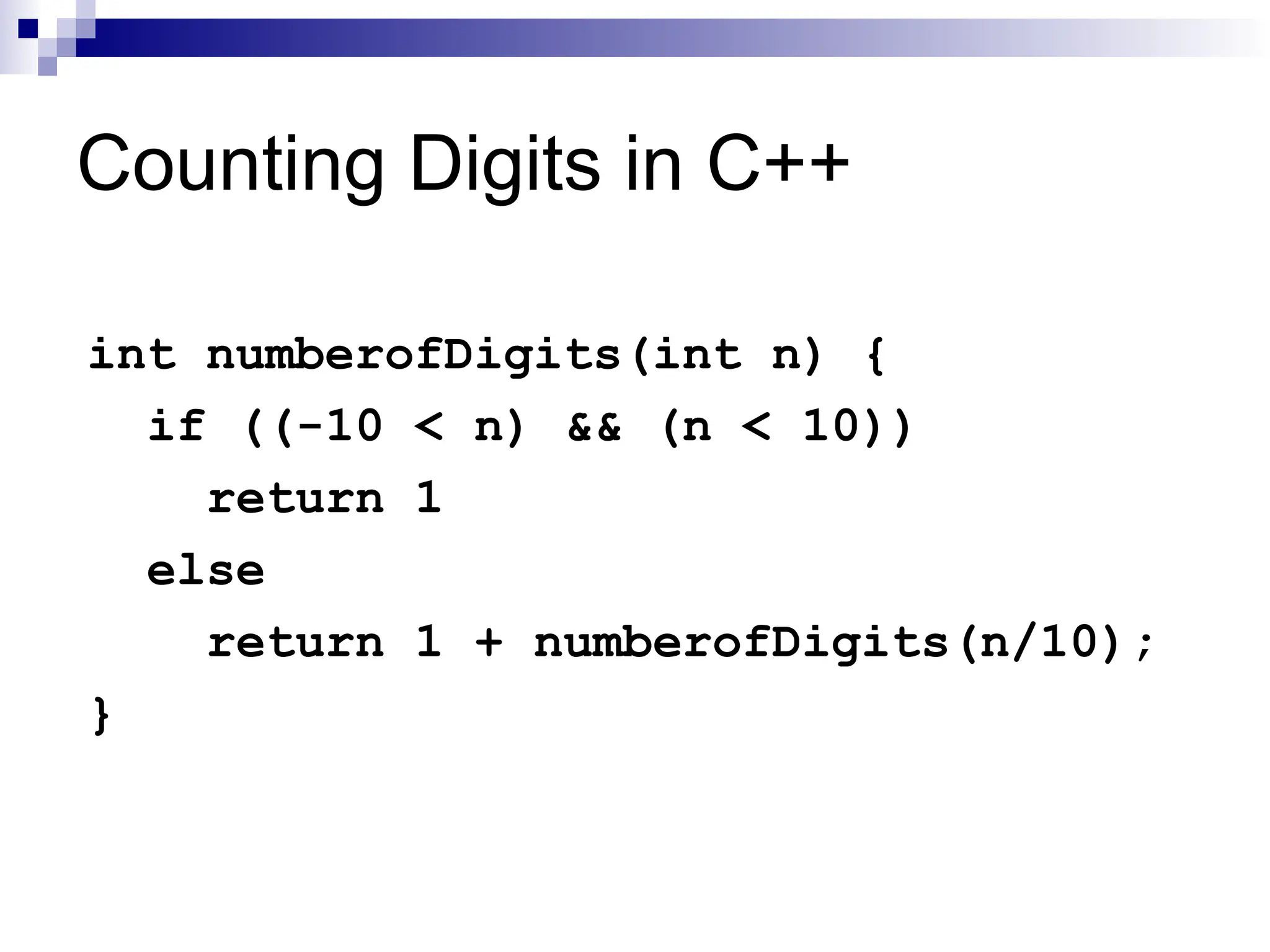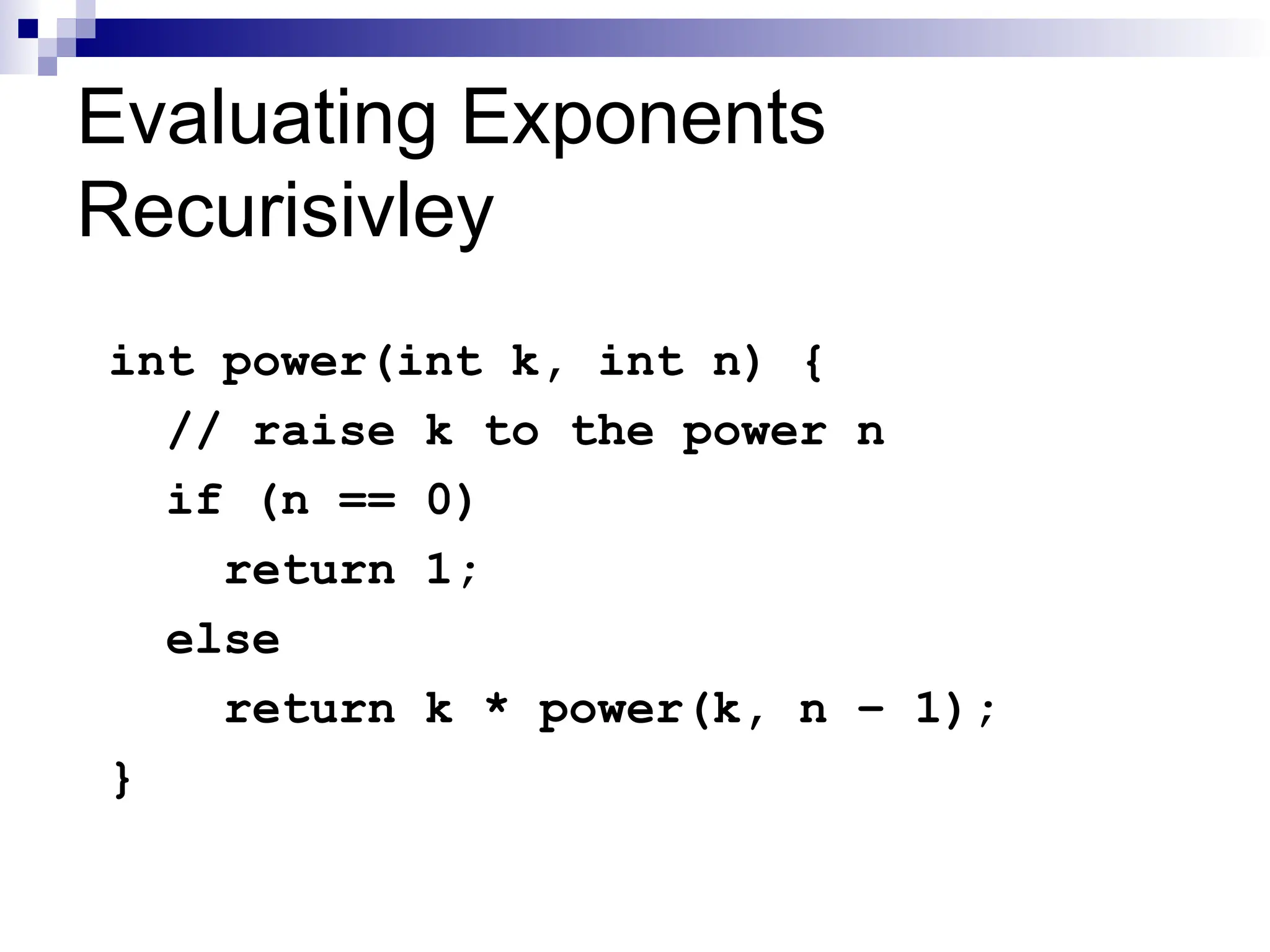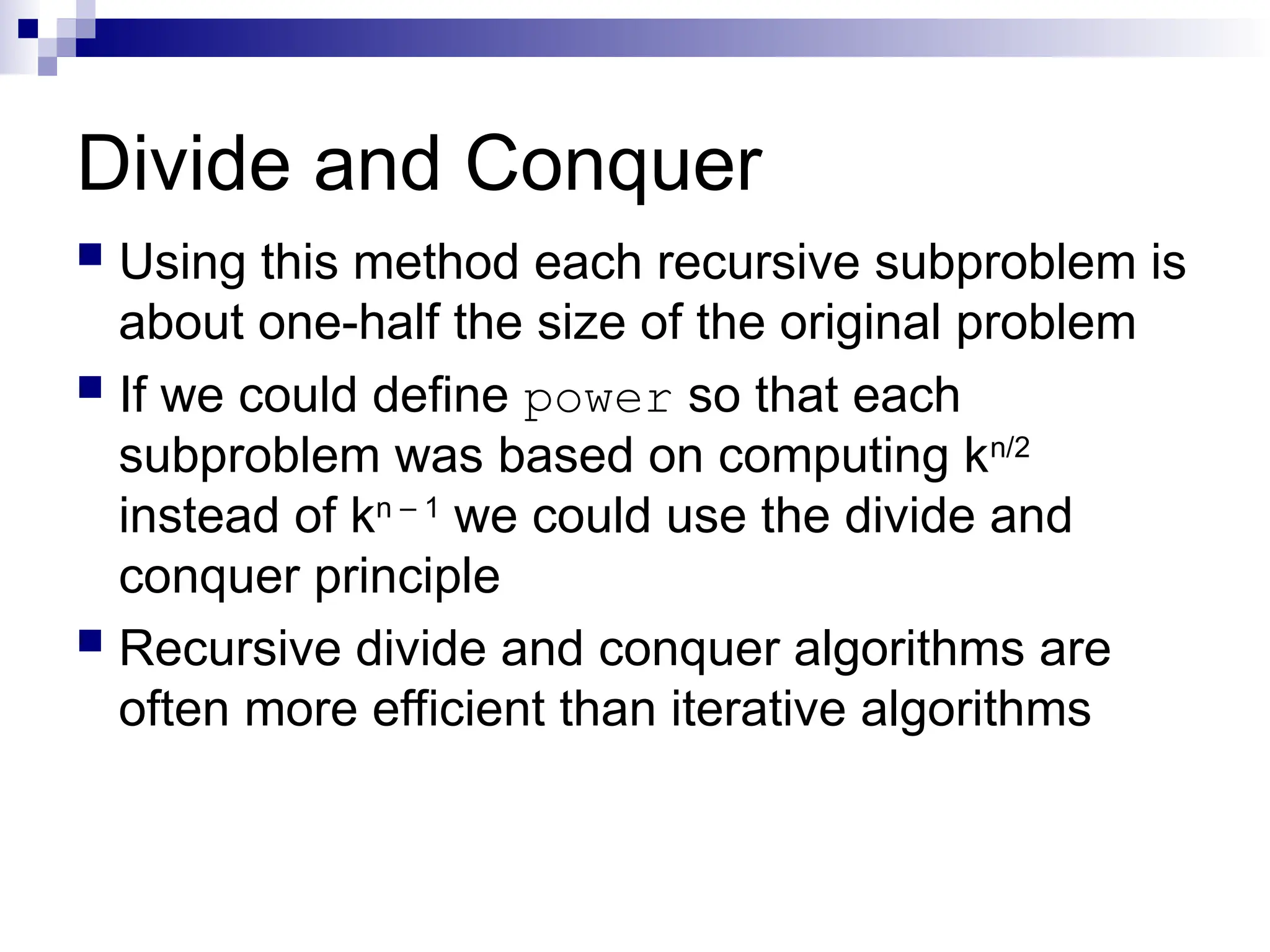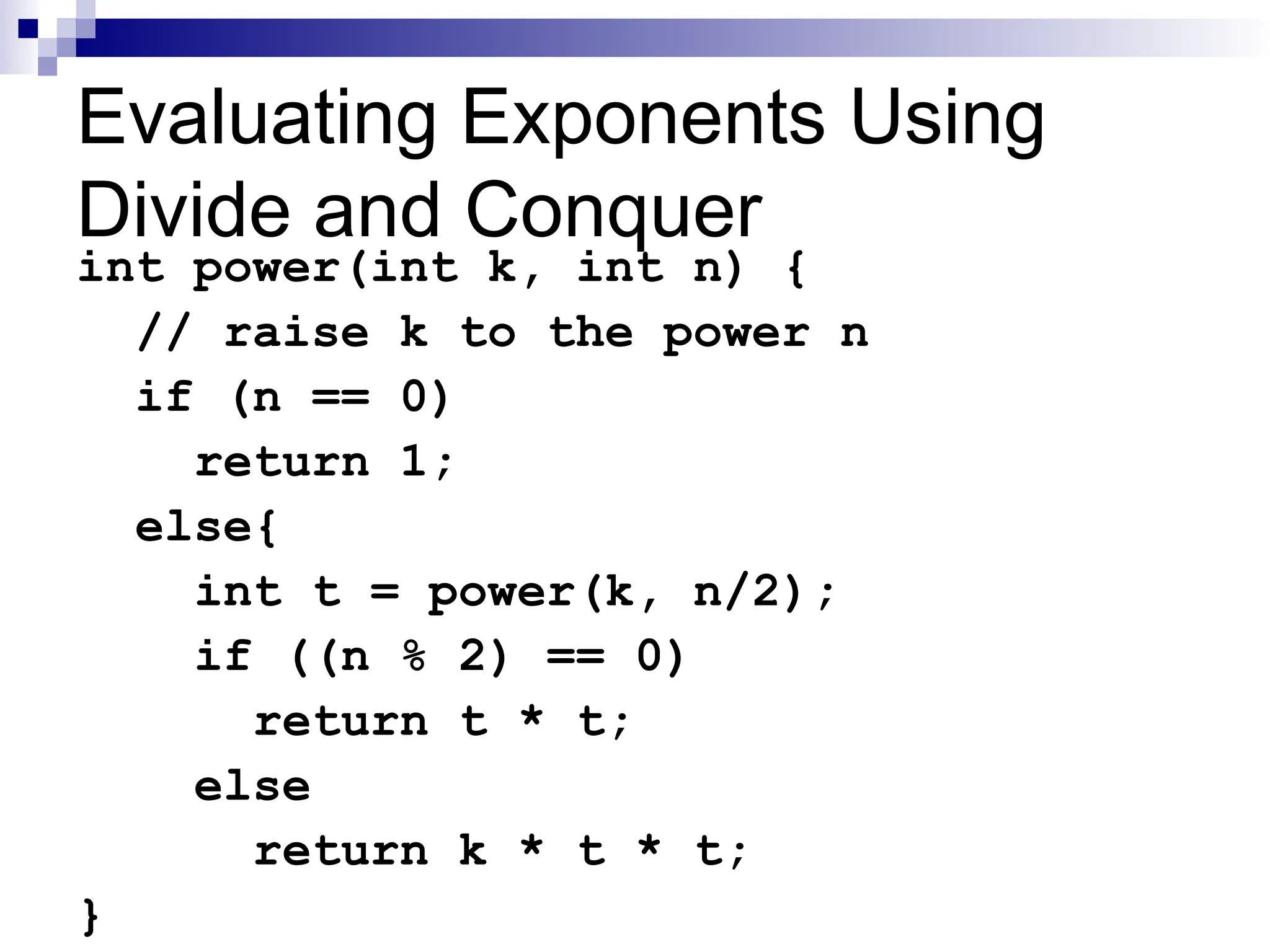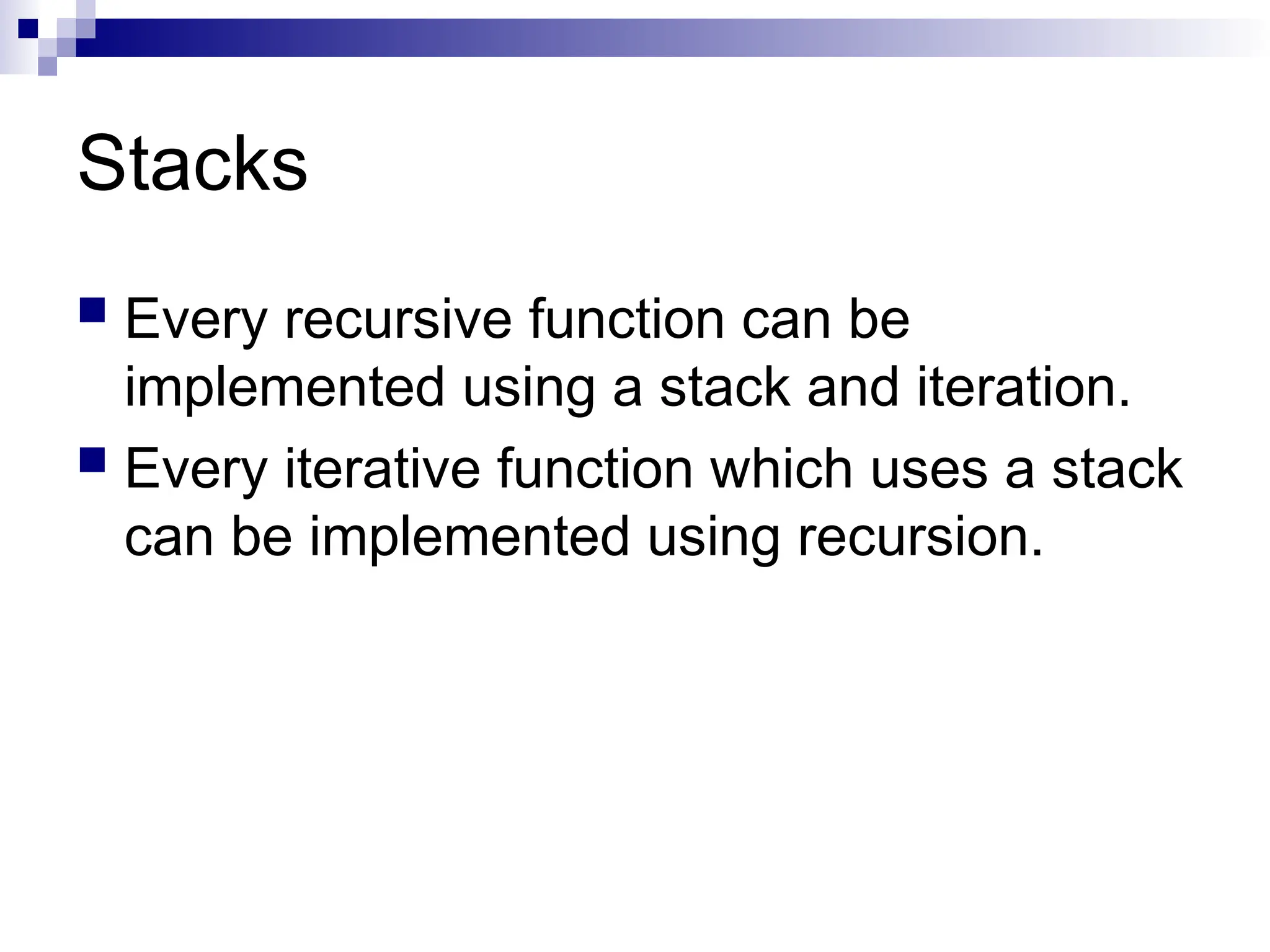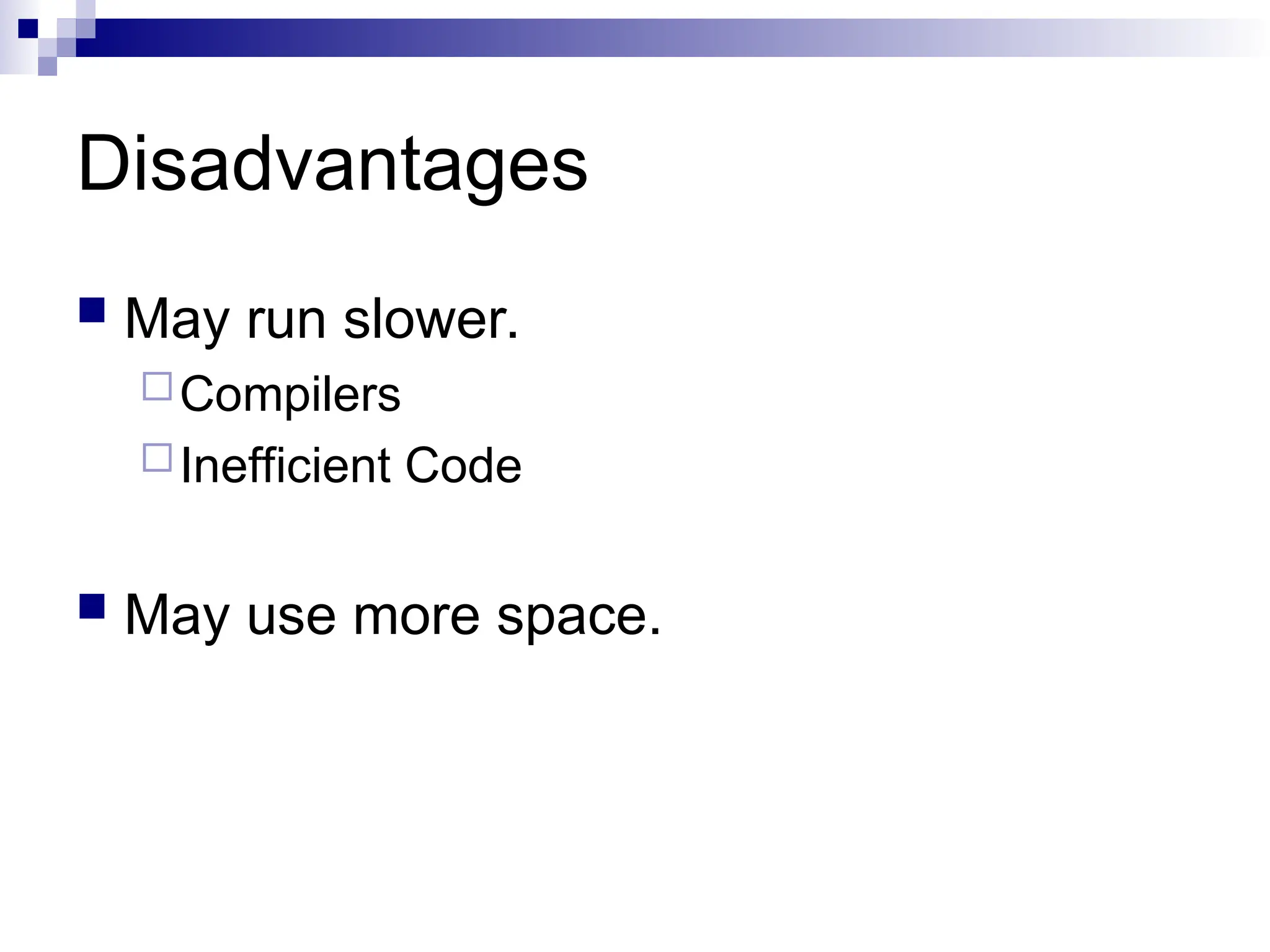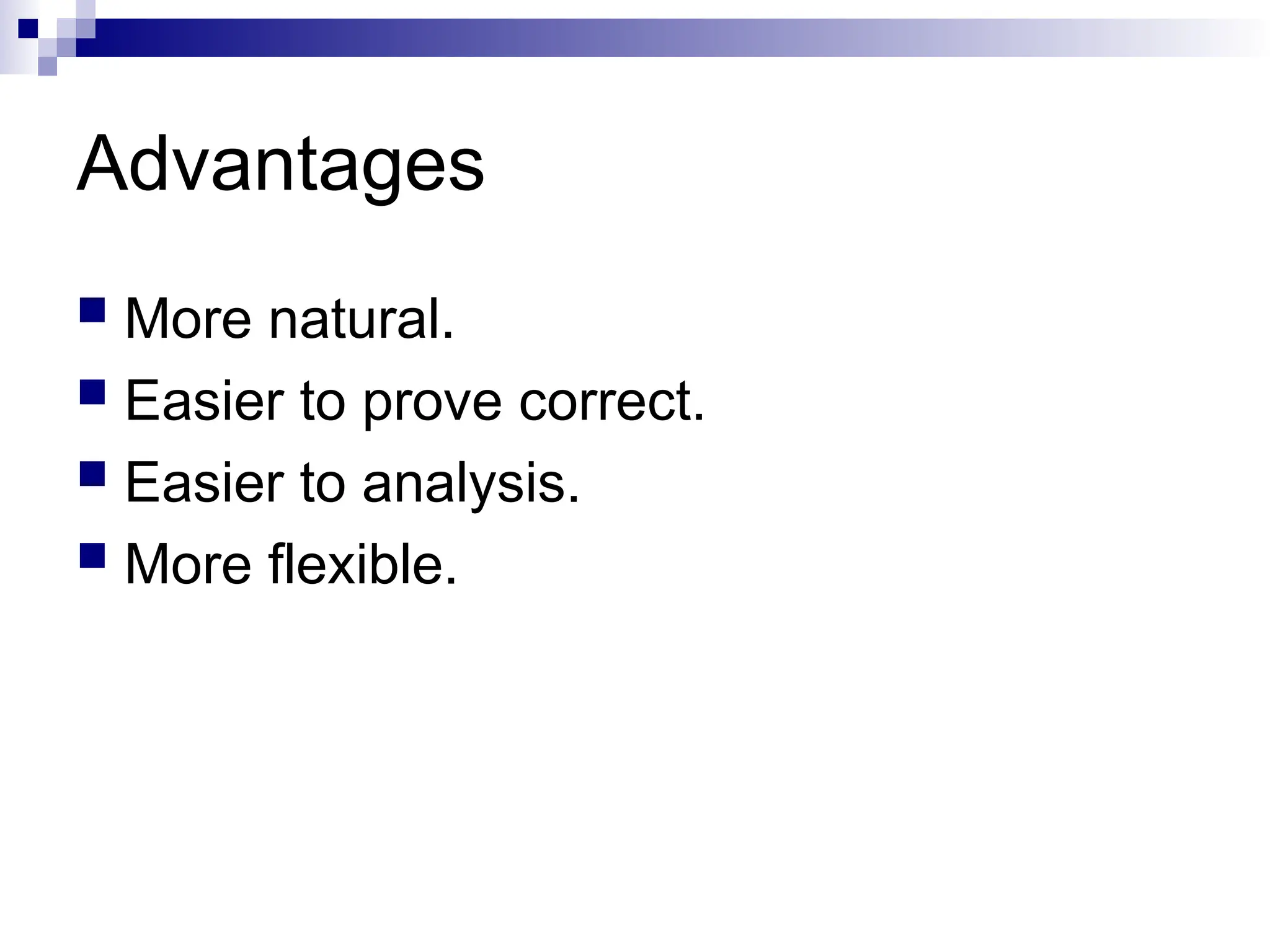The document contains examples of recursive functions in C++, demonstrating how to display numbers, sum integers, count digits, and evaluate exponents using both simple recursion and a divide and conquer approach. It also discusses the implementation of recursion using stacks, along with the advantages and disadvantages of recursion versus iteration. Overall, it highlights the efficiency and clarity of recursive programming methods.
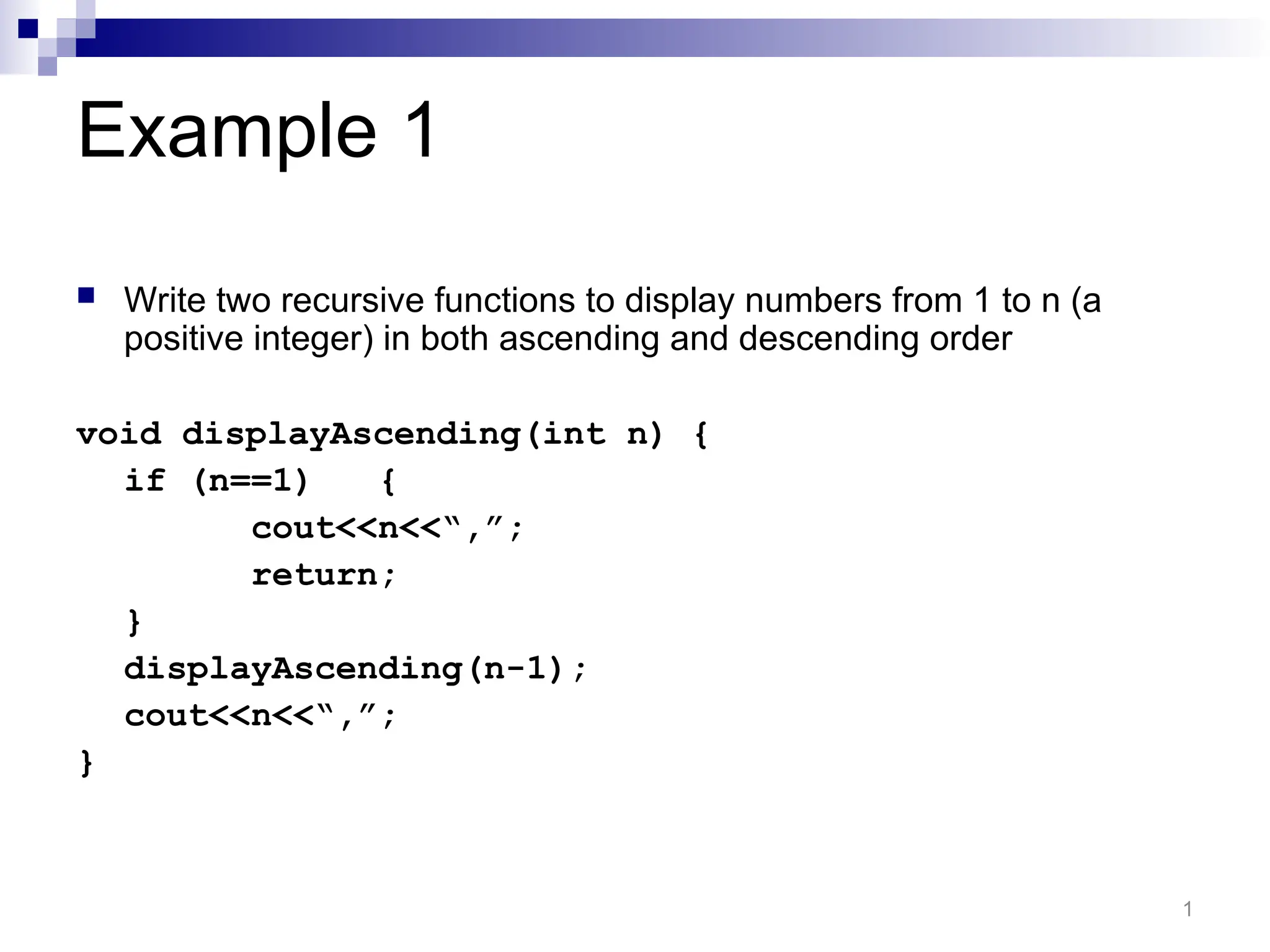
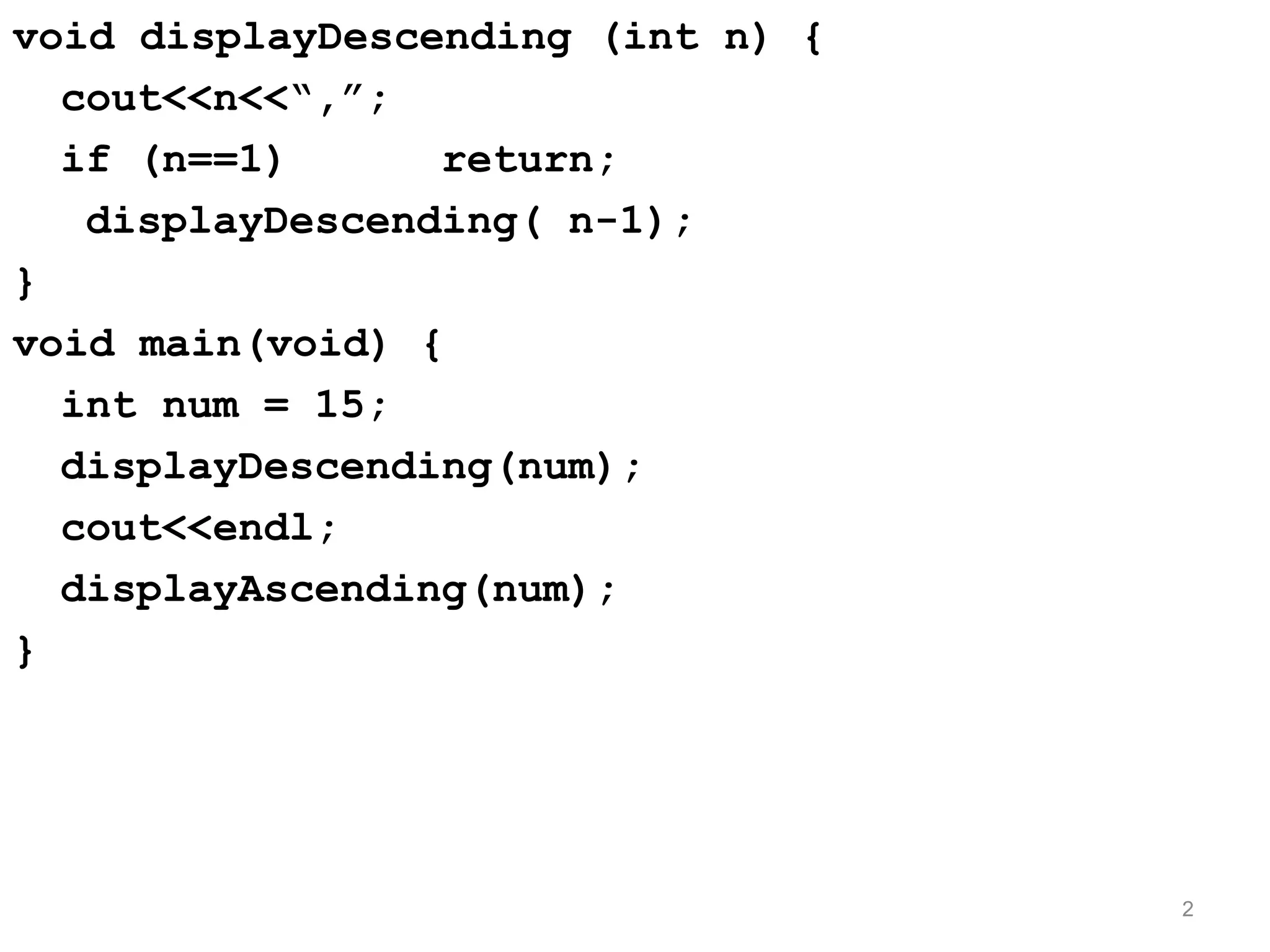
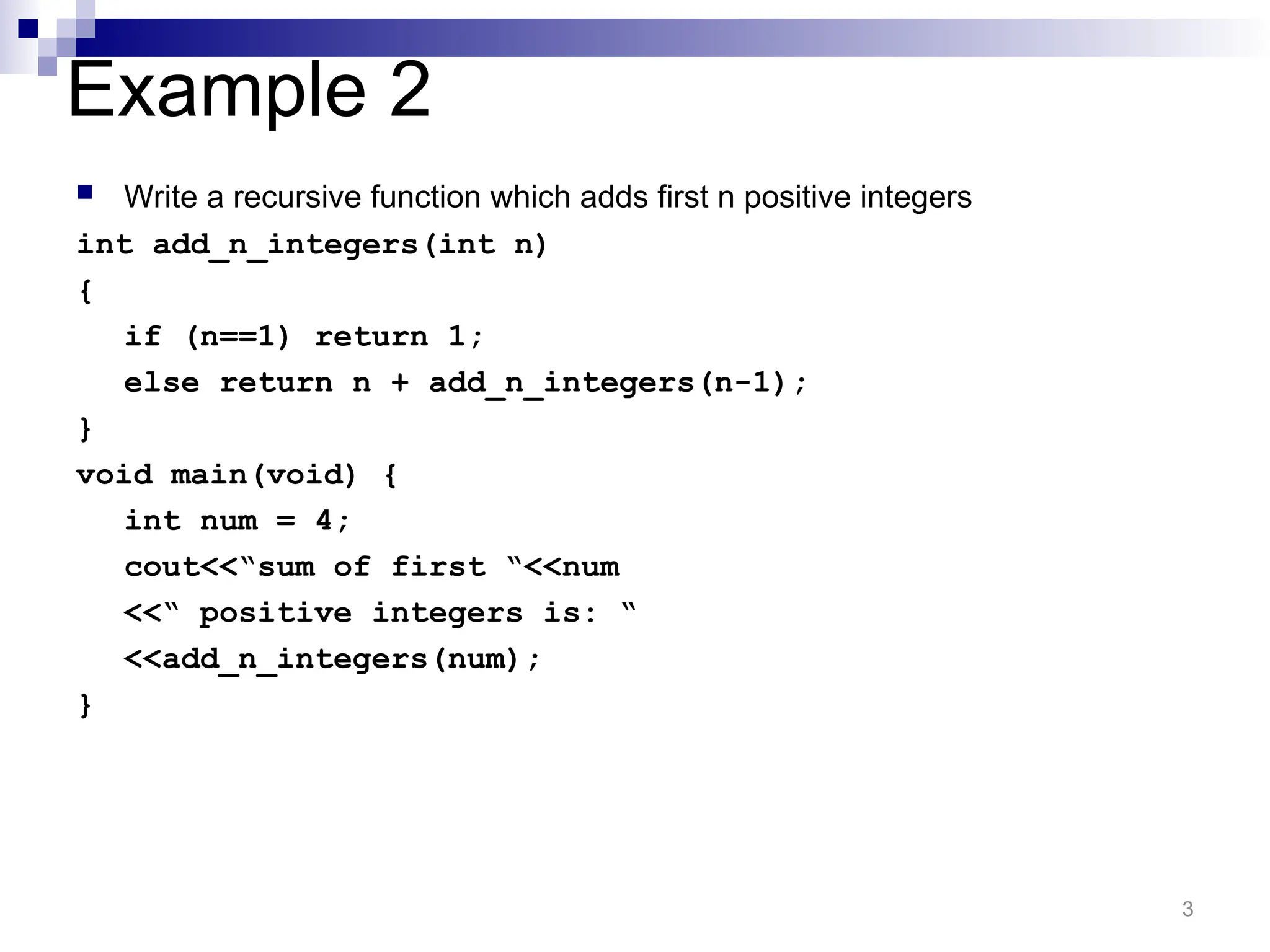
![Counting Digits
Recursive definition
digits(n) = 1 if (–9 <= n <= 9)
1 + digits(n/10) otherwise
Example
digits(321) =
1 + digits(321/10) = 1 +digits(32) =
1 + [1 + digits(32/10)] = 1 + [1 + digits(3)] =
1 + [1 + (1)] =
3](https://image.slidesharecdn.com/lec-32recursion-copy2-250116140429-3260d545/75/Lec-32-Recursion-Divide-and-Conquer-in-Queue-4-2048.jpg)
